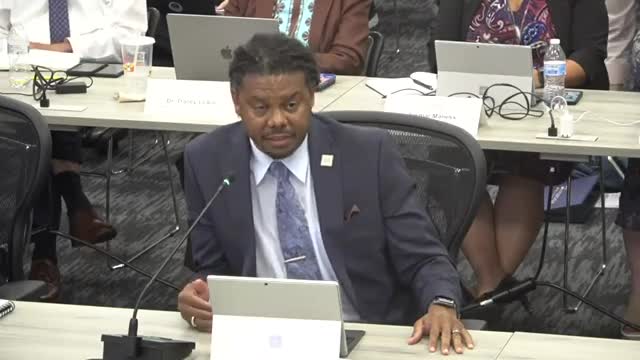Community demands preservation amid school renovation delays
July 24, 2024 | Guilford County Schools, School Districts, North Carolina

This article was created by AI summarizing key points discussed. AI makes mistakes, so for full details and context, please refer to the video of the full meeting. Please report any errors so we can fix them. Report an error »

In a recent government meeting, board members discussed the complexities surrounding the preservation of a historic school facade as part of a larger renovation project. The conversation highlighted the challenges of balancing historical preservation with the practical needs of expanding school capacity and adhering to budget constraints.
One board member expressed concerns about the impact of preserving the 1928 facade on the project's timeline, estimating an additional six to eight months of construction time due to the need for careful engineering and stabilization efforts. This delay could hinder the overall progress of the renovation, which aims to add 100 seats to the school.
The discussion also emphasized the importance of community involvement in the design process. Board members acknowledged feedback from local residents, particularly from neighborhood associations, advocating for a design that integrates well with the surrounding architecture of Lindley Park. Past projects were cited as examples of successful community engagement, where local input shaped the final design.
Financial implications were a significant focus, with one member noting that the original bond passed for the school renovation included commitments to the community that may not be fully realized under the current plan. The estimated costs for the project have escalated, raising concerns about fulfilling promises made to the community.
In light of these discussions, a motion was proposed to amend the current plan to ensure the preservation of the facade, reflecting a desire among some board members to honor historical values while still addressing the pressing needs of the school. The meeting underscored the ongoing tension between preserving history and meeting modern educational demands, a challenge that will require careful consideration as the project moves forward.
One board member expressed concerns about the impact of preserving the 1928 facade on the project's timeline, estimating an additional six to eight months of construction time due to the need for careful engineering and stabilization efforts. This delay could hinder the overall progress of the renovation, which aims to add 100 seats to the school.
The discussion also emphasized the importance of community involvement in the design process. Board members acknowledged feedback from local residents, particularly from neighborhood associations, advocating for a design that integrates well with the surrounding architecture of Lindley Park. Past projects were cited as examples of successful community engagement, where local input shaped the final design.
Financial implications were a significant focus, with one member noting that the original bond passed for the school renovation included commitments to the community that may not be fully realized under the current plan. The estimated costs for the project have escalated, raising concerns about fulfilling promises made to the community.
In light of these discussions, a motion was proposed to amend the current plan to ensure the preservation of the facade, reflecting a desire among some board members to honor historical values while still addressing the pressing needs of the school. The meeting underscored the ongoing tension between preserving history and meeting modern educational demands, a challenge that will require careful consideration as the project moves forward.
View full meeting
This article is based on a recent meeting—watch the full video and explore the complete transcript for deeper insights into the discussion.
View full meeting
